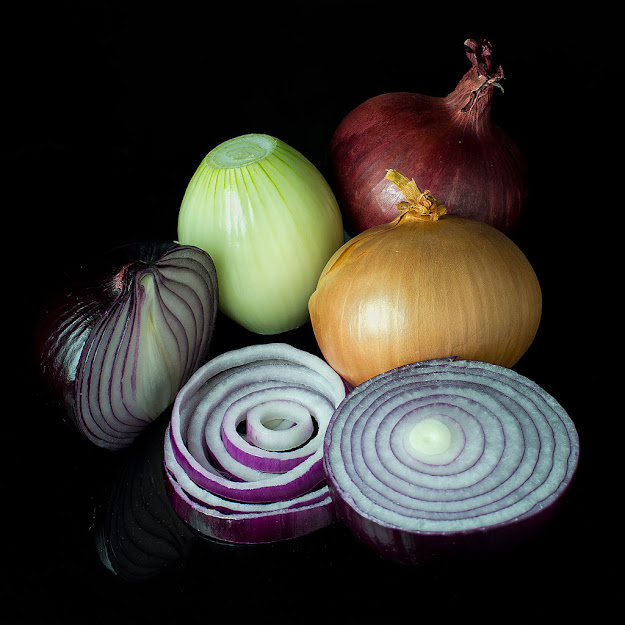The answers are lots and very. Onions are members of the
allium family along with garlic, scallions, shallots, leeks, and chives. They
have been cultivated for over 7,000 years and their origin plant and location
are not actually known with any certainty, although there is some evidence they came
from Central or Southwest Asia and spread along trade routes.
Onions come in varieties from sweet to sharp and can be
eaten raw, cooked in a variety of ways, dried, pickled, and more. The types of
onions most likely to be found in the average American grocery store are:
- Yellow: by far the most common onion on the market, the yellow onion makes up around 90% of onions grown in the United States. It has a stronger onion flavor than many other types and is used in dishes such as French Onion Soup, stews, kebabs, and other dishes where its vibrant flavor is welcome.
- Sweet: when most people think about sweet onions, the first one that comes to mind is the Vidalia, named after the city in Georgia where they were first grown. However, Texas has their 1015 sweet onion, named for the optimal planting date, and Washington State has the Walla Walla sweet onion, named after the county of origin. There are others sweet onions, but these three dominate the market.
- Red: not as popular as yellow or sweet onions, red or purple onions are frequently used in eastern European and Italian recipes. They tend to be sweeter than yellow onions and sharper in flavor than sweet onions. In my family, a slice of red onion was traditionally added to a bagel with cream cheese and lox during the break-fast following Yom Kippur.
- White: this type has a mild flavor and is also sweeter than yellow onions, though not as much as sweet onions. They are commonly featured in Mexican and European dishes that call for some onion flavor without the risk of overpowering the rest of the dish as some of the other types might do. White onions are also the most likely of the family to be used raw, such as in a salad.
In general, the sweeter the onion, the shorter its shelf
life. However, onions can be canned for longer term storage, and for those with a
dehydrator, onions can also be diced and dried. Onions refrigerator-pickled in a
jar of balsamic vinegar with a little sugar can make a savory treat as a
side dish.
In addition to being edible, onions have numerous other
uses. For example, onion oil can be used as an organic pesticide, and are an
ingredient in some hair oils. Onion skin can also be boiled down to make dye.
Obviously this pungent vegetable is not for everyone, but for those who enjoy it, there are many options for the table. However, avoid sharing them with our furry friends as onions
are toxic to dogs, cats, guinea pigs, and many other small animals.
Just like ogres, onions are made up of many layers.



No comments:
Post a Comment